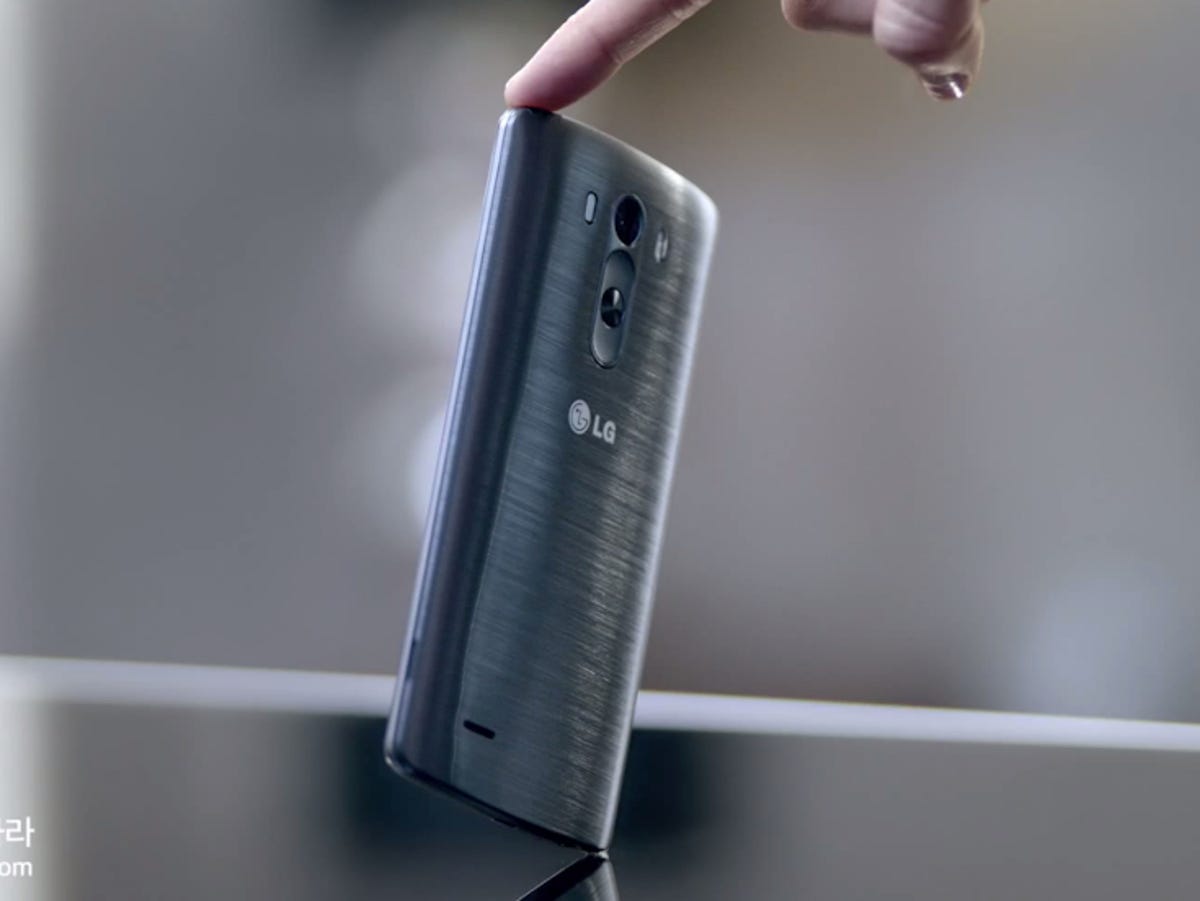
LG
LG is making its best case yet for a potential blockbuster smartphone: laser beams.
The Korean electronics conglomerate on Tuesday introduced the G3, its latest flagship smartphone, in a massive global unveiling. The point of the six-city launch event: to demonstrate that LG and the G3 should be considered in the same stratus as Apple’s iPhone and Samsung’s Galaxy S franchises.


LG
For LG, having a hit smartphone is critical to its mission of raising its profile in the eyes of consumers, creating a “halo effect” that benefits its wide range of other products, from washing machines to televisions. Having long played second fiddle to Korean rival Samsung Electronics, LG hopes to break through with the G3.
The G3 isn’t a revolutionary product — even by the company’s own admission — but it addresses some of the key weaknesses of the G2 and adds a genuinely cool laser-guided autofocus. There’s the usual upgrades too: a larger, clearer display and the speediest processor available from Qualcomm.
CNET talked to Dr. Ramchan Woo, head of LG’s mobile platform planning division, about the creation of the G3. The following is an edited transcript of our email conversation.
Q: In creating the G3, what was the general theme or approach you used?
Woo: Our general approach was to stick with the game plan we started in G2, but work on some of the areas which received the most critical feedback, such as the plastic back cover and the [user interface]. G3 is a work of evolution; it couldn’t have happened without G2.
How much were you influenced by how other smartphones such as the iPhone 5S
, Samsung Galaxy S5 or HTC One?
Of course we look at all the competition out there but there wasn’t any one aspect that we were trying to emulate. Every phone has its pluses and minuses, but nothing out there is perfect.
The camera continues to be an important feature for consumers, yet you didn’t change it too much. Why?
We kept the camera pretty much as is, since people said that was what they loved about the G2. We added software stabilization in OIS+ for G Pro 2 , which we carried over in the G3. We don’t think more megapixels is the only way to improve a camera, so we decided to focus on other areas.
The biggest negative feedback we got about the G2’s camera was the speed of focusing so we made that our top priority. We came up with the laser idea [the G3 uses a laser to measure the distance to the camera’s subject] from our home appliance company, where the engineers were testing lasers as part of the robot vacuum cleaner’s camera. We took that idea and implemented it as a way to speed up focus time. We can do this type of “holistic” R&D because of our diverse business interests, not many smartphone manufacturers can.
What material is the back made of? It looks metallic.
It’s plastic with a unique metal film, not metallic paint. We think this offers the best of both worlds — the flexibility to allow the back cover to be removed with a premium metallic finish that isn’t a fingerprint magnet.
We’ve talked before about the difficulties of using metal materials, both in terms of cost and signal reception — does that remain an issue?
It still is. We think the disadvantages in terms of weight and challenges in manufacturing outweigh the benefits. That might change in the future with advances in materials science but right now, we think there are too many trade-offs using metal in large smartphones.
How far back does the development process go? At what point did you start thinking about the G3?
We were already thinking of the successor to G2 even before the G2 launched. You have to understand that many of the decisions that went into G2 were finalized long before its August 2013 introduction.
What did you feel worked about the G2? What didn’t work?
We weren’t happy with the quality of the back cover and the software needed more development. We were happy with almost everything else, from the battery to the camera to performance.
Speaking of the software, how have you improved the experience?
As you’ll see in the G3, it’s much simpler and less “in your face.” It’s definitely more subtle.
The back button has obviously been a controversial move, but you’re sticking with it. What have you learned over the last few months about how people are using the back button?
What we’ve learned is that over time, people grow to love it. There are no buttons to press accidentally when taking the phone out of your pocket and the larger buttons are easier to press when you’re talking on the phone. Consumers were so used to buttons on the sides and top that they didn’t know what to make of our design at first, so we were willing to make the investment in time and effort and it’s paying off.
It appears as if you’ve trimmed down the bezel even more. Is that difficult to do construction-wise? How far away are we from a true edge-to-edge glass display? Or is that practically impossible?
We’re pretty proud of our industry-leading slim bezel capabilities. I wouldn’t say edge-to-edge glass is impossible but I’m not sure it’s desirable, since we want to leave a little bit of room for fingers! The benefit of slimmer bezels is that we can use a larger display and still keep the phone manageable with one hand.
Why is the LG G3 coming out so quickly after the G2, which launched in August?
We wanted to introduce G3 earlier so consumers could comparison-shop with the main competitor phones. It will give us more time this year to roll G3 out globally, which is a strong plus.



